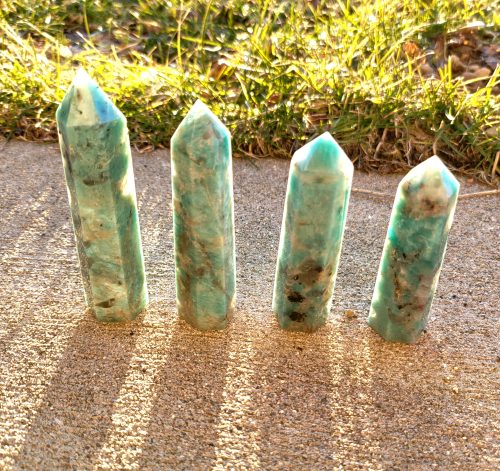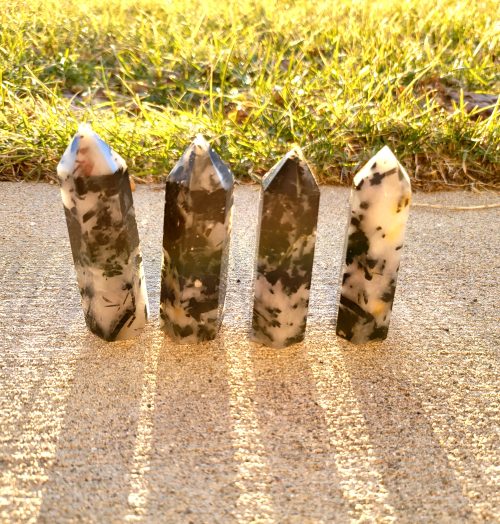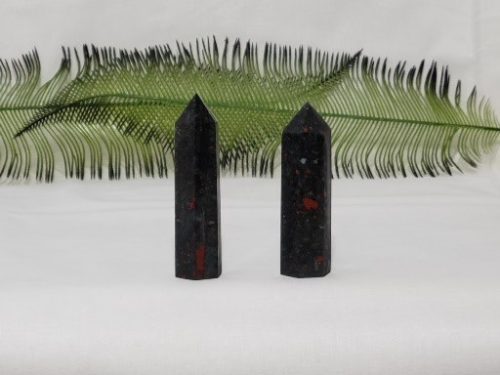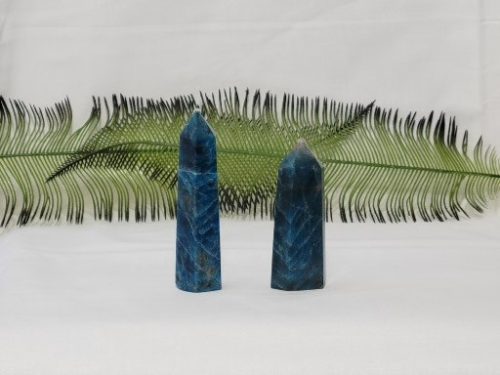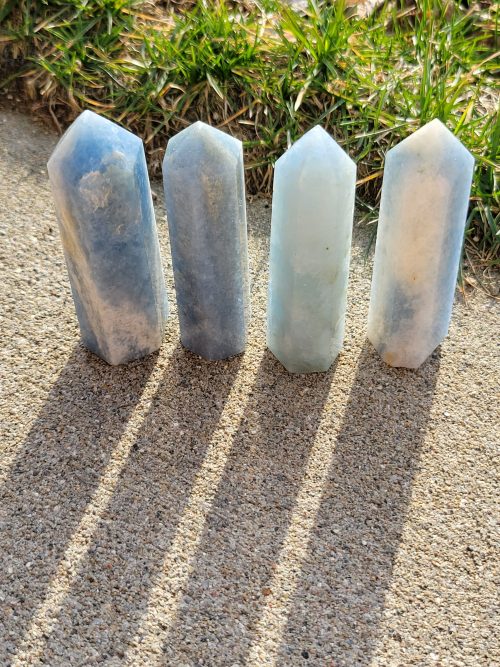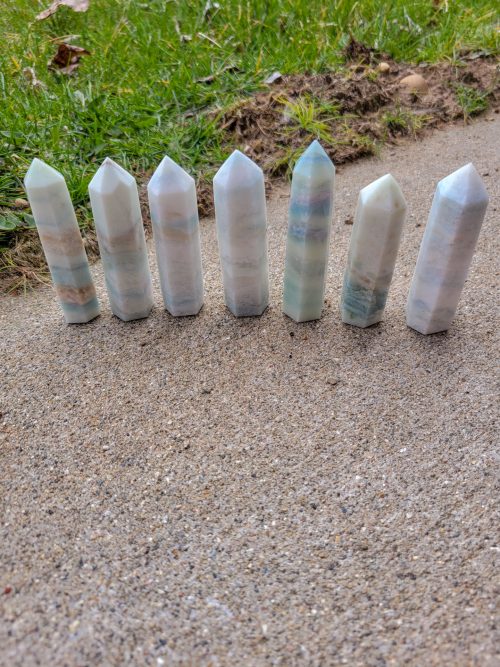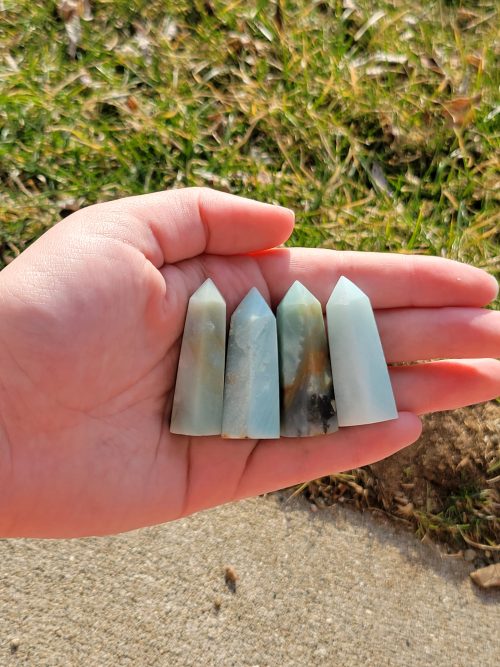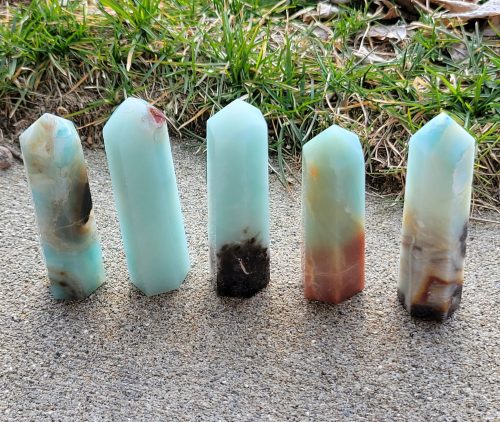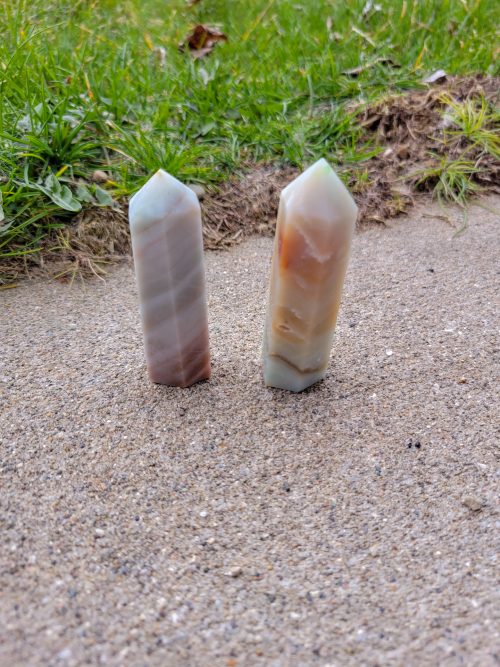-
9cm - 10cm Tall Amazonite is a type of feldspar that gets its name from the Amazon River. Geologists once thought the color came from the oxides that come off of copper. In recent studies, geologists suggest this stone gets its color from the lead and water contents that are found within its contents. Originally found in Brazil, these beautiful rocks can also be found in Madagascar. There have also been findings of this crystal in Colorado, United States. ***Due to natural variations in stones, the appearance will vary***
-
8cm Tall Amazonite is a type of feldspar that gets its name from the Amazon River. Geologists once thought the color came from the oxides that come off of copper. In recent studies, geologists suggest this stone gets its color from the lead and water contents that are found within its contents. Originally found in Brazil, these beautiful rocks can also be found in Madagascar. There have also been findings of this crystal in Colorado, United States. ***Due to natural variations in stones, the appearance will vary***
-
8cm Tall Tourmaline is a complex family of minerals composed of aluminum borosilicate mixed with magnesium, iron or other metals. Tourmaline can come in a variety of colors depending on its proportion of these components. These colors are red, pink, yellow, brown, green, blue, black, or violet colors. This mineral can be found mainly in Brazil and many parts of Africa. ***Due to natural variations in stones, appearance will vary***
-
10cm Tall Bloodstone is formed, like many other minerals, when molten rock rises to the Earth's surface and cools. Then as gasses escape and settle on the rock's surface, it leaves little pockets on the surface of the mineral. The green color in Bloodstone comes from Chlorite and Amphibole. The red spots are iron oxide deposits where the gasses rose. Most Bloodstone is found in India, Australia, Brazil, and Madagascar. ***Due to natural variations in stones, the appearance will vary***
-
11cm Tall Apatite is formed under sedimentary rocks found in marine environments. In this environment, phosphatic organic debris (such as bones, teeth, scales, and fecal material) mineralizes to form these crystals. These crystals vary from green to blue color. ***Due to natural variations in stones, the appearance will vary***
-
9cm Tall Calcite is a rock-forming mineral that is found throughout the world in sedimentary, metamorphic, and igneous rocks. The blue color comes from the calcium carbonate inclusions within this mineral. Blue calcite can be found in many places around the world but mostly in Mexico, The United States, Britain, and Iceland. ***Due to natural variations in stones, appearance will vary***
-
4.5cm Tall Caribbean calcite is a very new combination mineral that was recently found in 2019 in Pakistan. It's a combination of a very light ocean Blue Calcite and light brown and white aragonite. Although recently discovered, this mineral is not expected to stick around for long unless more deposits are found in other areas. ***Due to natural variations in stones, appearance will vary***
-
5.5cm Tall Caribbean calcite is a very new combination mineral that was recently found in 2019 in Pakistan. It's a combination of a very light ocean Blue Calcite and light brown and white aragonite. Although recently discovered, this mineral is not expected to stick around for long unless more deposits are found in other areas. ***Due to natural variations in stones, appearance will vary***
-
9cm Tall Caribbean calcite is a very new combination mineral that was recently found in 2019 in Pakistan. It's a combination of a very light ocean Blue Calcite and light brown and white aragonite. Although recently discovered, this mineral is not expected to stick around for long unless more deposits are found in other areas. ***Due to natural variations in stones, appearance will vary***
-
7.5cm Tall Caribbean calcite is a very new combination mineral that was recently found in 2019 in Pakistan. It's a combination of a very light ocean Blue Calcite and light brown and white aragonite. Although recently discovered, this mineral is not expected to stick around for long unless more deposits are found in other areas. ***Due to natural variations in stones, appearance will vary***

